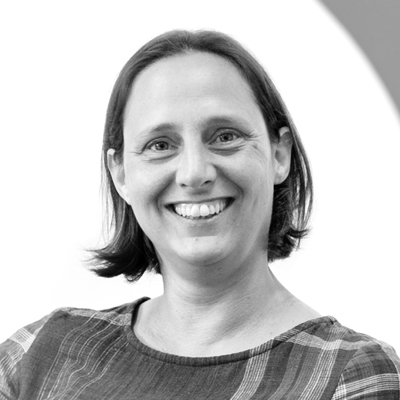Dyslexia Week: “We make great innovators”
on LinkedIn:
Dyslexia Week takes place from October 4 to 10 this year and is centered on the theme of invisibility.
Dyslexia’s common, with one in ten people believed to have it – but because dyslexia itself isn’t visible, it’s not immediately obvious who does.
To raise awareness and bust the many myths about this learning difference, the British Dyslexia Association has asked people to share their experiences.
Senior Lab Technician Dan Mayhew and Consultant Physicist Noga Sella discuss the challenges of working from home with dyslexia, and why people with dyslexia can make great innovators.
How does dyslexia impact you?
Dan: I mainly have issues around written communication, so report writing can take longer, and my written work needs additional reviews. The lack of face-to-face interactions in the work-from-home age means written language has become more critical, making exchanges harder.
Noga: I lost my ways of communicating when we all started having to work from home because of the pandemic. Being able to speak to someone in person, and see their non-verbal communication, like facial expressions and gestures, are so helpful to me. Suddenly, everyone switched to using emails and messaging. Video calls are better than written messages, but then you’re up against unwritten protocols. For example, are you allowed to just call someone out of the blue, or do you have to set it up beforehand? It’s been hard finding a way to work with people all over again. I think the more you use video calling like you’re going over to someone’s desk, the better.
What encouraged you to study science?
Noga: When I was nine years old, I fell in love with space after visiting The Royal Observatory in Edinburgh. Yes, dyslexia makes learning harder, but reading and writing aren’t the only ways to learn. Immersive activities are a great way to get children with dyslexia into science, or any topic.
Dan: Both of my parents are involved in STEM subjects, but my main inspiration was visiting the Science Museum in London as a child and finding out Lego then was made from oil. The practical aspects of chemistry and a more ‘applied’ course at university really encouraged me to follow my science passion.
What do you enjoy about working in innovation?
Noga: I enjoy working in science within industry, as opposed to academia. In academia, there’s pressure to write fast and well. Industry lets me do my innovation without having to fight against my dyslexia as much. For example, I can put my graphs in PowerPoint and explain them verbally.
Dan: I love the ability to chuck out traditional ideas and come out with new products and services that can improve the daily lives of billions of people worldwide.
Why does innovation need (more) people with dyslexia?
Dan: People with dyslexia tend to be highly creative, think outside the box, have good pattern recognition, be picture thinkers, and see the bigger picture. All these traits are great for innovation.
Noga: Innovation needs diversity of all kinds. Diverse teams let you see things in different ways and catch things you might miss if everyone were to see things in the same way.
How can employers support people with dyslexia in the workplace?
Noga: Don’t take tools like spell check or searchability for granted. Twenty years ago, I wouldn’t have been able to search for something using a search term that had a spelling mistake in, so I couldn’t have been where I am now. Organizations can help by making sure people have access to the most up-to-date tools.
Dan: Things always start with education and awareness. We need to develop environments that adjust to the needs and skills of individuals.
Can you recommend any tips or tools you find helpful?
Dan: The writing assistant Grammarly is a bit of software that I find incredibly powerful. Also, being open and honest about your disability can be a real asset. I’ve found that being genuine to a potential employer about your disability builds trust.
Noga: My piece of advice would be that asking is better than presuming. Don’t be shy to talk to me about my dyslexia. It took me a while to feel comfortable discussing it, but now I’m happy to, especially if it helps a child with dyslexia realize that if one path doesn’t look possible, there are always others.
About dyslexia
The British Dyslexia Association defines dyslexia as a neurological and learning difference that impacts how people process information. It primarily affects reading and writing but can also have an influence on someone’s ability to absorb information and their organizational skills.
Dyslexia and science: Busting the myths
Dyslexia occurs across the range of intellectual abilities and many dyslexics show strength in reasoning and visual creativity. Biophysicist Jacques Dubochet, who picked up the Nobel Prize in Chemistry in 2017, speaks openly about how dyslexia impacted his early education, as does molecular biologist Carol Greider, who won the Nobel Prize in Medicine in 2009. In an interview for The Yale Centre for Dyslexia & Creativity, she said, “Perhaps my ability to pull more information out of context and put together difficult ideas may have been affected by what I learned to do from dyslexia.”
What can everyone do to help?
As Dan and Noga say, change starts with awareness. The British Dyslexia Association’s website is a good source of information and offers advice on how to make life easier for employees and colleagues with dyslexia. Tips include:
- Record meetings (rather than emailing a summary).
- Give additional time to digest information, for example by sending materials in advance of a meeting.
- Use different formats to convey information, such as diagrams and flowcharts.
- Provide hard-copy resources on colored paper (find out which color helps the person read best).
- Give verbal as well as written instructions.
References
- Dyslexia Week 2021 – British Dyslexia Association [Internet]. British Dyslexia Association. [cited 30 September 2021]. Available from: https://www.bdadyslexia.org.uk/support-us/awareness-events/dyslexia-awareness-week/dyslexia-week-2021
- About dyslexia – British Dyslexia Association [Internet]. British Dyslexia Association. [cited 30 September 2021]. Available from: https://www.bdadyslexia.org.uk/dyslexia/about-dyslexia
- Rogers K. Jacques Dubochet | Swiss biophysicist [Internet]. Encyclopedia Britannica. [cited 30 September 2021]. Available from: https://www.britannica.com/biography/Jacques-Dubochet
- The Nobel Prize in Chemistry 2017 [Internet]. NobelPrize.org. 2017 [cited 30 September 2021]. Available from: https://www.nobelprize.org/prizes/chemistry/2017/press-release/
- The Nobel Prize in Chemistry 2017 [Internet]. NobelPrize.org. 2017 [cited 30 September 2021]. Available from: https://www.nobelprize.org/prizes/chemistry/2017/dubochet/158987-jacques-dubochet-interview-transcript/
- Rogers K. Carol W. Greider | American molecular biologist [Internet]. Encyclopedia Britannica. [cited 30 September 2021]. Available from: https://www.britannica.com/biography/Carol-W-Greider
- The Nobel Prize in Physiology or Medicine 2009 [Internet]. NobelPrize.org. [cited 30 September 2021]. Available from: https://www.nobelprize.org/prizes/medicine/2009/summary/
- Carol Greider, Ph.D., Director of Molecular Biology & Genetics at Johns Hopkins University – Yale Dyslexia [Internet]. Yale Dyslexia. [cited 30 September 2021]. Available from: https://dyslexia.yale.edu/story/carol-greider-ph-d/

Dan Mayhew
Senior Lab Technician

Noga Sella
Consultant Physicist